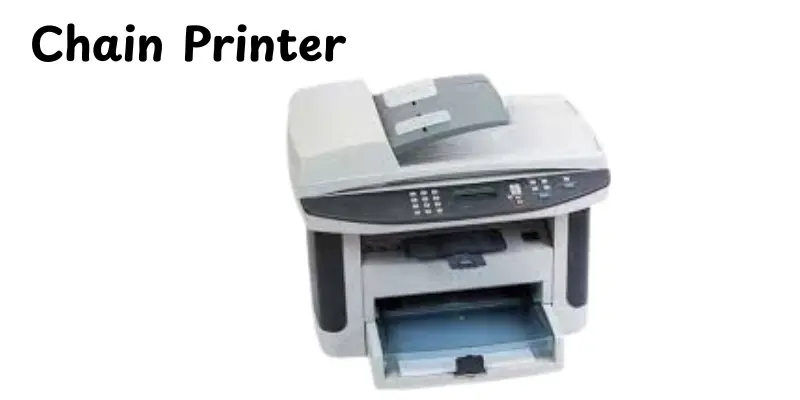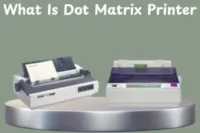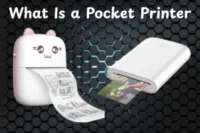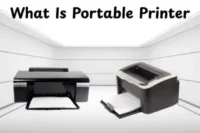What Is Chain Printer and Why It’s Still Useful Today
Published: 18 Oct 2025
Ever wondered how large offices used to print thousands of pages in minutes before modern printers arrived? That’s where the chain printer made its mark. It was one of the fastest and most dependable printing machines of its time. This guide will explain what it is, how it works, its major components, key benefits, and limitations. We’ll also learn who used it, why it was important in its time, and how it compares to today’s printers. While chain printers were once the fastest option for bulk printing, today many offices rely on modern technologies like the LED printer for speed and efficiency.
What Is a Chain Printer?
A chain printer is a type of high-speed impact printer that prints text on paper by moving a chain of letters. The chain consists of all letters, numbers, and symbols set up in a loop that moves continuously. When the correct character reaches the print position, small hammers strike the paper through an ink ribbon, forming the text. It prints one entire line at a time, which makes it more rapid than normal printers. Big companies, banks, and computer centers mostly used chain printers for bulk printing workloads.

How a Chain Printer Works
A chain printer works in a simple and organized way. It prints one full line at a time using a moving chain of characters. Here’s how the process happens step by step:
- The printer’s chain rotates at high speed with all characters arranged in sequence.
- Paper and ink ribbon are placed between the chain and a row of hammers.
- When the chain moves, the control unit detects the right character to print.
- When the character is set with the right position, the hammer behind the paper strikes it.
- The impact transfers the ink from the ribbon to the paper, forming a clear print.
- This process repeats quickly for each character, creating a complete line of text in seconds.
Key Parts of a Chain Printer
A chain printer has different important parts that work together to print each line quickly and clearly. Here’s a simple look at its main components and their roles:
- Character Chain:A moving band that contains a whole set of characters, which are repeated multiple times.
- Print Hammers & Magnets: Strike the paper in perfect timing with the moving chain.
- Ink Ribbon: Sits between the chain and paper to transfer ink during printing.
- Paper Feed Mechanism: Moves the paper forward after each printed line.
- Control Unit / Buffer: Manages the timing of hammer strikes and stores line data.
- Tension & Drive System: Maintains smooth and steady chain movement at high speed.
Types of Chain Printer
There are a few types of chain printers, each designed for specific printing needs and speeds. They all work on the same simple principle but different in how the chain and characters are arranged. Let’s look at the main types below:
- Standard Chain Printer: Uses a continuous loop of characters arranged in a repeating pattern.
- Train Printer:For faster character changes, use small chain parts (known as trains) instead of a single loop.
- Customized Character Chain Printer: Allows special letters or symbols to be used for particular business or technical purposes.
Uses of Chain Printer
Chain printers were commonly used in places where speed and accuracy were important. They handled huge data printing projects well and continuously. Here are some of their common applications:
- Banking Systems: Used for printing transaction records and customer statements.
- Payroll Departments: Helped print bulk salary slips quickly and accurately.
- Government Offices: Managed large-scale reports and data listings efficiently.
- Educational Institutions: Printed student results and administrative documents.
- Data Centers: Ideal for continuous, high-volume data printouts.
- Billing Departments: Generated bills and invoices for customers in bulk.
Advantages and Disadvantages of Chain Printer
In this section, we’ll look at the main pros and cons of a chain printer. Understanding both sides helps you decide if it’s the right choice for large-scale printing tasks.
| Advantages of Chain Printer |
|---|
|
| Disadvantages of Chain Printer |
|---|
|
Maintenance Tips
Keeping a chain printer in good condition helps ensure that it runs easily and lasts longer. Regular care also ensures that prints are clear and uniform. Here are some easy maintenance tips:
- Clean the Print Area: Remove dust and ink gather from the chain and hammer areas on a regular basis.
- Check the Ink Ribbon: Replace the ribbon when prints start to disappear.
- Lubricate Moving Parts: Apply light oil to the chain and drive system to reduce wear.
- Inspect the Chain: Look for old or damaged characters and replace if needed.
- Align Paper Feed: Keep the paper properly set to avoid jams.
- Run Test Prints: Print a few test lines after servicing to ensure proper timing and print quality.
Buying Guide of Chain Printer
If you’re going to buy a chain printer, you should know what to look for. These machines are now mostly used in specific sectors, and analyzing basic features may help you get the best value. Here’s a quick guide:
- Printing Speed: Choose one that is right for your workload, which is often measured in lines per minute.
- Durability: Look for models built for continuous printing and long-term use.
- Maintenance Support: Make sure spare parts and technical help are easily available.
- Noise Level: Some older models can be loud, so check for quieter versions if noise is a concern.
- Compatibility: Make sure it works with your existing computer systems or print software.
Conclusion
So, guys, we’ve covered all you need to know about chain printers, including what they are, how they work, their major parts, pros and cons, and even where to get them. These printers played a major role in high-speed printing and are still used in certain fields today.If you ever come across one, value its power and accuracy; it’s an actual piece of printing history. Continue exploring, learning, and staying tuned for more technical ideas, my friends!
FAQs
A chain printer is used to print huge amounts of text, including bills, reports, and data sheets. It is often used in offices and data centers that require fast, line-by-line printing.
A chain printer can print between 400 to 3,000 lines per minute. Its speed depends on the model and number of characters in the chain.
No, chain printers are designed only for text. They can’t print pictures or detailed graphics because they use fixed characters on a moving chain.
They are rare but still used in industries that require fast and bulk text printing. Most modern offices now use laser or inkjet printers instead.
Check the paper feed and make sure the chain and hammer system are correctly set up. This issue is generally resolved with regular cleaning and maintenance.
Both are line printers. A drum printer uses a rotating drum, while a chain printer uses a moving chain of characters to print each line.
No, a chain printer is an impact printer. It works by striking an ink ribbon to transfer text onto paper.

- Be Respectful
- Stay Relevant
- Stay Positive
- True Feedback
- Encourage Discussion
- Avoid Spamming
- No Fake News
- Don't Copy-Paste
- No Personal Attacks

- Be Respectful
- Stay Relevant
- Stay Positive
- True Feedback
- Encourage Discussion
- Avoid Spamming
- No Fake News
- Don't Copy-Paste
- No Personal Attacks





